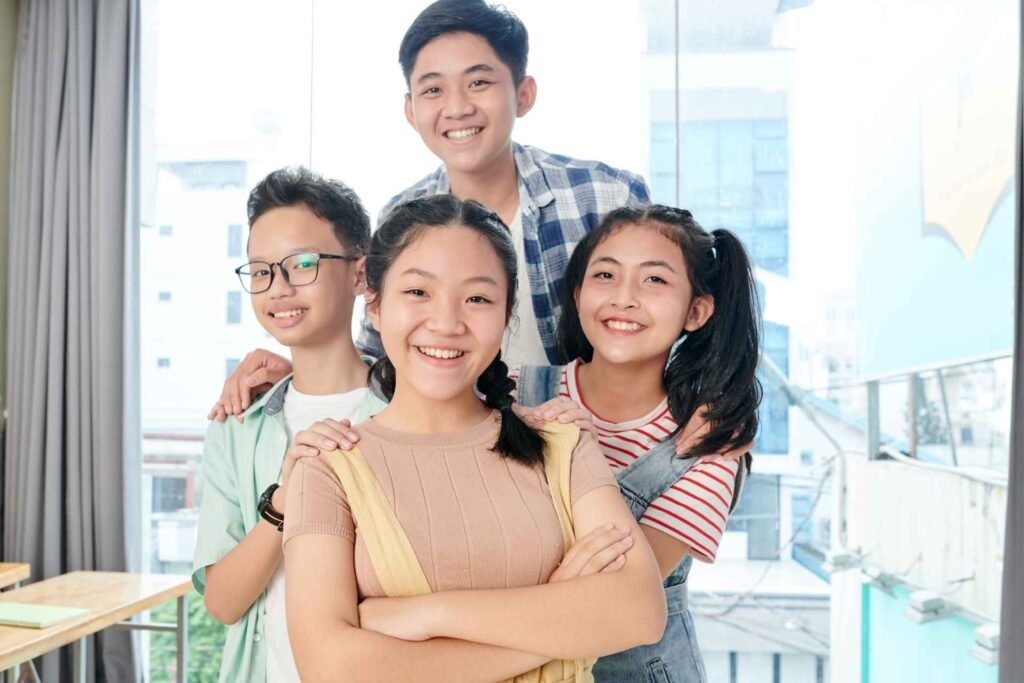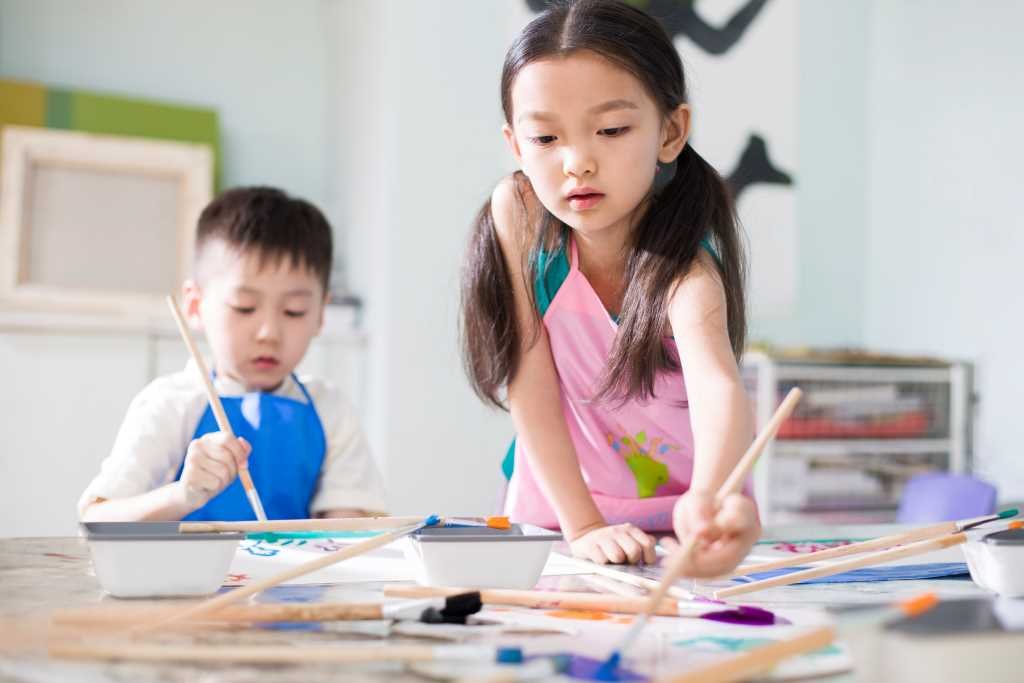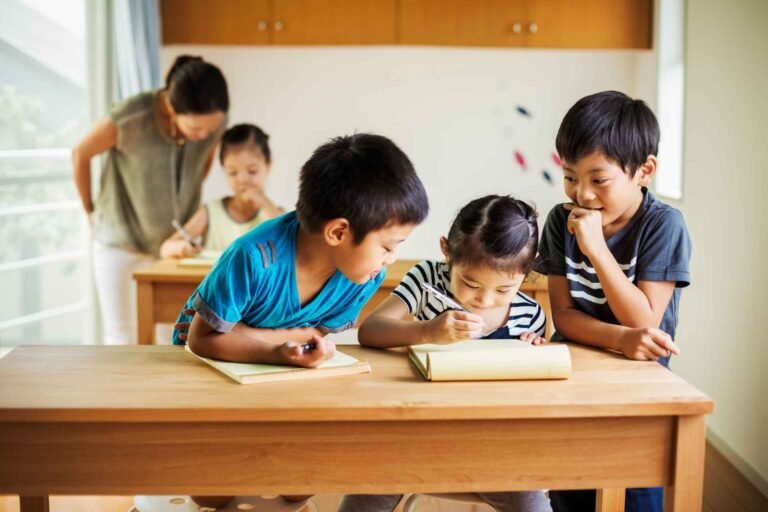Home » The Sycamore Center for Progressive Education Curriculum » Grade 3 Curriculum: First Sweep Through History
Grade 3 Curriculum: First Sweep Through History
Get to explore geography and global cultures, from the fall of Rome to the 20th century.
Major Subjects: Bible, History, English, Filipino, Science, Math
Minor Subjects: Music and Art, Health, Physical Education, Technology and Livelihood Education


CORE SUBJECT
Bible 03
Learning Outcomes:
More specifically, learners are expected to exhibit cognitive, affective, and kinesthetic competencies as manifested in the following outcomes:
- Identify major persons, places, and events from the Bible in order to get to know their Christian faith through different biblical stories taught through various media.
- Develop sense of self and identity in God by learning about His love for humanity as manifested in different stories in the Bible.
- Apply values learned through different biblical stories in everyday life through object lessons, discussions, and various activities.
- Justify the importance of the biblical stories taught in class and develop strong foundations of their Christian faith.
Student References / Workbooks
- The Holy Bible, International Children’s Bible Edition
CORE SUBJECT
History and Geography 03
Introduction to World History 2
Learning Outcomes:
More specifically, learners are expected to exhibit cognitive, affective, and kinesthetic competencies as manifested in the following outcomes:
- Highlight the significance of notable individuals and significant occurrences from both the past and present by presenting timeline figures and discussing these topics.
- Record and chart pertinent geographic sites (namely, Europe, Middle East, and Asia) to establish a connection between them and the cultural and historical affairs deliberated upon during our lectures.
- By collaborating and discussing together, take an in-depth look at how various societies are established through a combination of geographic factors, people, culture, religion, values, and beliefs. This will help the student gain a greater understanding of how geography affects human behavior and culture.
- Use the various craft materials available to enhance your understanding and appreciation of the distinct architecture, tools, jewelry and other cultural artifacts that are covered under the diverse civilizations and cultures discussed.
- Empathize with the different cultures across different time periods and locations to gain appreciation of various historical and cultural heritage through role playing and games.
- Generate their own ideas on how different cultures and societies are interrelated and how this relates to their present way of life through discussions, role playing, and essay writing.
- Compare and contrast different societies based on people, culture, religion, values, and beliefs to cultivate a deeper appreciation of the world around them, which in turn, enables individuals to be respectful of cultural diversity.
- Encourage the cultivation of a strong sense of accountability for the well-being of the planet, the communities we inhabit, and the global state of affairs by actively engaging in practical implementation and interweaving with various fields of study.
Student References / Workbooks
- A Child’s History of the World, Virgil A Hillyer, 2014
- The Usborne Book of World History, Anne Millard, and Patricia Vanags, 2008
- The Usborne Time Traveler, Judy Hindley, et al.,1998
LANGUAGE SUBJECT
English 03
Language Arts, Reading and Writing
This course covers level-appropriate reading and writing skills and strategies that can be used to assist the student in independent writing and becoming better readers.
Learning Outcomes:
More specifically, learners are expected to exhibit cognitive, affective, and kinesthetic competencies as manifested in the following outcomes:
- Develop critical thinking skills while reading narrative and informational texts by applying reading comprehension strategies learned through modeling, direct instruction, practice, games, reading text, and other literacy-centered activities.
- Use reading skills and strategies to form conclusions and recreate new ideas through semantic mapping, brainstorming, discussions, written output, and other creative output.
- Demonstrate understanding of grammatical conventions and structures by using language correctly and in context through exposure to correct language, direct instruction, writing activities, and practice.
- Expressively and accurately read aloud level-appropriate narrative and informational text for fluency and comprehension through oral reading activities in the classroom.
- Use oral and written communication skills to critically and creatively respond to stories (both read-aloud and read independently) through discussions, written compositions, and other creative literary output.
- Have genuine interest and appreciation for reading authentic text by showing enthusiasm and excitement during oral and written literacy activities.
- Develop empathy for various characters and accountability for different issues presented in narrative and informational texts read by describing their successes and struggles through role play, written work, discussions, and other creative output.
- Empathize with various characters in narratives read by describing their successes and struggles through role play, written work, discussions, and other creative output.
Student References / Workbooks
- Keep the Lights Burning, Abbie by Peter and Connie Roop
- Third Grade Detectives: The Clue of the Left-Handed Envelope by George Stanley
- The Paint Brush Kid by Clyde Robert Bulla
- The Littles by John Peterson
- Steps to Functional Writing 3 by Norma J. Serrano
LANGUAGE SUBJECT
Filipino 03
Komunikatibo, Replektibo, Mapanuring Pag-iisip at Pagpapahalagang Pampanitikan 3
Learning Outcomes:
- Mapanuring pakikinig at pag-unawa sa mga napakinggang diskusyon o kwento.
- Pagsasalita at pagpapahayag ng sariling ideya, kaisipan, karanasan, at damdamin.
- Mapanuring pagbasa sa iba't ibang uri ng teksto at pagpapalawak ng talasalitaan.
- Pag-unawa sa iba't ibang uri ng teksto.
- Naipapakita ang iba't ibang kasanayan upang makilala at mabasa ang mga pamilyar at di pamilyar na mga salita.
- Pagpapahalaga at paggamit ng wika sa komunikasyon at pagbasa ng iba't ibang panitikan.
- Natatalakay ang paksa o isyung napakinggan.
- Naisasalaysay muli ang nabasang kuwento o teksto nang may tamang pagkakasunod-sunod at nakagagawa ng poster sa binasang kuwento.
- Nakasusulat ng talatang pasalaysay.
- Nakasasali sa mga usapan at talakayan, pagkukuwento, pagtula, pagsulat ng sariling tula at kuwento.
Student References / Workbooks
- Filipino Isang Hamon 3
- The Filipino odyssey 3.
STEM SUBJECT
Science 03
Classifying Living Things and Composition of Non-Living Things
Learning Outcomes:
- Relate, differentiate and categorize characteristics of living things through discussion, research, and observation.
- Find value in the diversity of life through the creation of different visual media and journal reflections.
- Recognize individual social responsibility to their environment through projects, role play, and exposure to current environmental problems.
- Show knowledge of different life forms through design creation of your own living thing.
- Identify the different physical and chemical properties/changes in matter through everyday tasks and experiments.
Student References / Workbooks
- Craig, A. & Rosney C., (1997). The Usborne Science Encyclopedia. Usborne Publishing Ltd.
STEM SUBJECT
Mathematics 03
Foundation of Mathematics 3
Learning Outcomes:
More specifically, learners are expected to exhibit cognitive, affective, and kinesthetic competencies as manifested in the following outcomes:
- Exhibit a solid comprehension of numeracy, including concepts of numbers, number sense, geometry, algebra, measurement, basic statistics, and probability, through a mix of digital and hands-on educational methods like discussions, interactive games, and physical activities using manipulative tools.
- Utilize fundamental arithmetic operations such as addition, subtraction, multiplication, and division in solving numerical expressions and word problems, employing physical materials, visual aids, measuring tools, and digital devices.
- Compare and analyze whole numbers ranging from 0 to 999,999 using comparative terms like same, more, fewer, greater, lesser, equal, highest, and lowest.
- Assess the standard measurements for length, mass, and volume.
- Identify, describe, and examine the properties of two-dimensional and three-dimensional shapes.
- Understand the concepts of elements, tessellations, and areas in plane geometry.
- Develop data literacy by constructing, recognizing, analyzing, gathering, organizing, interpreting, and creating data representations such as pictographs, bar graphs, and tally charts.
- Determine the suitable mathematical operation for various problem-solving situations.
- Formulate predictions in probability scenarios.
- Tackle mathematical problems that involve the addition and subtraction of two to three-digit numbers, as well as multiplication, division, Roman numerals, pattern recognition, measurements, and time calculations to the nearest minute.
- Create projects or practical applications that showcase an understanding and application of mathematical principles and concepts.
- Recognize and value the role of mathematics in various societal, economic, environmental, and cultural contexts.
- Foster values like teamwork, cooperation, confidence, honesty, and sportsmanship through the application of mathematical concepts in real-life scenarios.
Student References / Workbooks
- My Math Grade 3 Textbook

